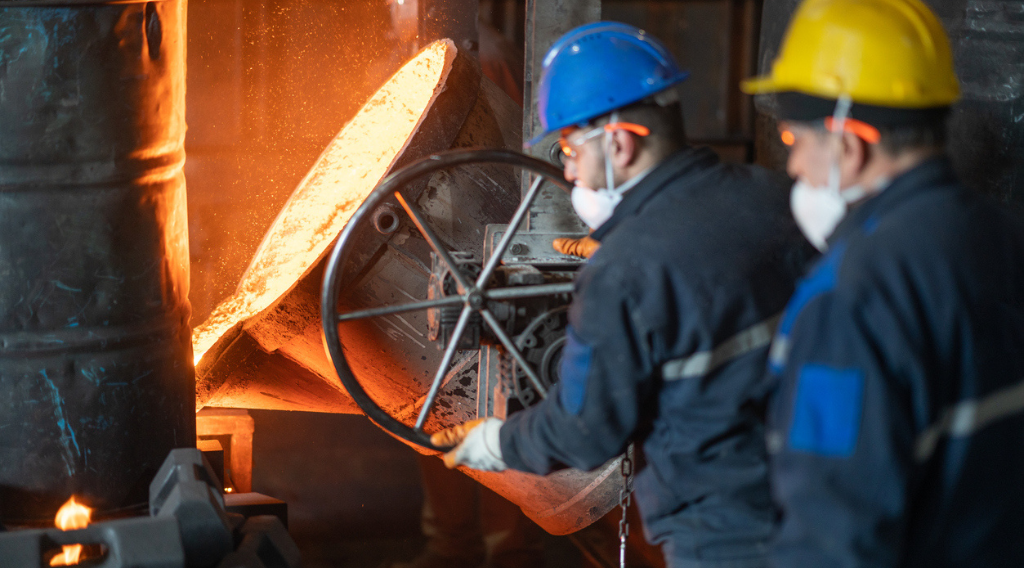 Great Plains Institute convened the first CO2NNECT Virtual event on December 14, which highlighted the recently released and first-of-its-kind analysis from Rhodium Group that focused on the potential job growth and economic impact of carbon capture deployment in the near- to medium-term to help meet midcentury decarbonization goals. The event included an analytical presentation by Rhodium Group followed by a reaction panel discussion moderated by former US Senator Heidi Heitkamp.
Great Plains Institute convened the first CO2NNECT Virtual event on December 14, which highlighted the recently released and first-of-its-kind analysis from Rhodium Group that focused on the potential job growth and economic impact of carbon capture deployment in the near- to medium-term to help meet midcentury decarbonization goals. The event included an analytical presentation by Rhodium Group followed by a reaction panel discussion moderated by former US Senator Heidi Heitkamp.
Senator Heitkamp opened the webinar and emphasized that carbon capture is essential for reducing emissions to net-zero by midcentury and that a broader portfolio of policies beyond the federal 45Q carbon capture tax credit is needed for fully expanded deployment of the technology. Heitkamp also made clear this technology can be applied to sectors beyond energy, including industrial sectors such as steel, cement, and ethanol.
Key takeaways from the webinar:
- The analysis shows that carbon capture technology and the associated transport infrastructure is a multi-billion dollar investment opportunity for the United States.
- States can tailor policies directed towards these opportunities for investment and drive high-wage job retention and growth in their respective regions.
- Carbon capture is essential for reducing emissions to net-zero by midcentury and can be applied across industry sectors.
Rhodium Group analysis of economic and jobs impact of carbon capture deployment
John Larsen, a director at Rhodium Group, then summarized their extensive analysis of the economic and jobs impact of near- to medium-term carbon capture deployment in existing facilities in multiple regions of the US for industry and energy sectors. GPI commissioned Rhodium Group’s independent analysis to explore the economic benefits of carbon capture in the US.
Rhodium’s presentation focused on three main regions: Rocky Mountain; Midwest and Northern Plains; and Gulf Coast and Southern Plains. Each of the three highlighted regions resulted in unique profiles that showcase carbon capture potential in multiple sectors throughout the US.
The Rocky Mountain region (CO, MY, NM, UT, WY) shows the majority for industrial carbon capture deployment in gas processing (10 facilities) and cement (10 facilities), totaling $1 billion–$1.5 billion in capital investment, 330–500 jobs associated with the initial construction, and 315–430 ongoing jobs, with the majority of these results coming from the cement sector. For the energy sector, coal was the largest in investment and job growth with $19 billion–$28 billion in capital investment, 5,520–8,290 initial jobs, and 5,590–3,740 ongoing jobs.
The Midwest and Northern Plains region (IA, IL, IN, KS, MI, MN, MO, ND, NE, OH, SD) show large near- to medium-term carbon capture deployment potential for ethanol and steel with over 150 ethanol facilities ultimately capturing 45 million metric tons of CO2 per year. These two industrial sectors alone would see $7.2 billion–$10.7 billion in capital investment, 2,265–3,365 initial jobs, and 2,555–3,640 ongoing jobs. Similar to the Rocky Mountain region, coal was also where the largest investments in carbon capture were seen in the energy sector for the Midwest and Northern Plains, totaling $43 billion – $64 billion in capital investment, 12,350–18,510 initial jobs, and 7,900–11,820 ongoing jobs.
The Gulf Coast and Southern Plains region (AR, LA, MS, OK, TX) saw refineries (32 facilities) and hydrogen (28 facilities) as the largest industrial sectors with carbon capture deployment potential, with $6.1 billion–$9 billion in capital investment, 2,250–3,355 initial jobs, and 1,550–2,200 ongoing jobs. Within the energy sector, gas power generation was equal to coal in deployment and jobs creation, totaling $24 billion–$39 billion in capital investments, 7,320–10,980 initial jobs, and 4,260–6,390 for gas power generation.
Larsen then provided a snapshot of near-to medium-term carbon capture opportunities in five industrial sectors—ethanol, cement, hydrogen, refineries, and steel—within the contiguous US. Combined, carbon capture deployment in these sectors could provide $28 billion–$48 billion in capital investments, 9,290–13,960 initial jobs, and 8,440–11,820 ongoing jobs.
In summary of the analysis, Larsen noted the deployment of carbon capture technology and the associated transport infrastructure is a multi-billion dollar investment opportunity for the United States. Just in the Midcontinent region alone, the modeling shows carbon capture to have $132–$200 billion in capital investment potential, resulting in 66,000 to nearly 100,000 jobs. There are multiple industries that can explore carbon capture technology and no region has just one industry that stands out. Given the unique profile of each region, states can tailor policies directed towards these opportunities for investment and drive high-wage job retention and growth in their respective regions.
Senator Heidi Heitkamp moderates Q&A discussion with industry, labor, and NGO leaders
Senator Heitkamp then moderated a lively discussion with a reaction panel who provided helpful insight on how the Rhodium Group analysis could be applied to their industries and organizations. All panelists emphasized that carbon capture, use, and storage is a needed tool for deep decarbonization, especially in the industrial sector.
Lynn Scarlett, the chief external affairs officer of The Nature Conservancy, noted that when looking at the climate challenge, it requires an all-hands-on-deck approach. Especially in the industrial sector where these solutions are needed for these industries to continue down their path towards decarbonization.
Jessica Looman, the executive director of the Minnesota State Building and Construction Trades Council, expanded on this point to include the importance of jobs by saying, “everyone looks for an all-hands-on-deck approach, but we are the hands.” Looman emphasized this point by noting this analysis does not include the existing jobs that will be protected from using carbon capture technology to decarbonize existing facilities.
Michael LeMonds, the vice president of environment, land and government affairs at LafargeHolcim, spoke from the perspective of one of these industries looking to decarbonize using carbon capture technology. LeMonds described the short-term steps LafargeHolcim was taking toward decarbonization, including investing in solar and wind generation, but carbon capture will be the solution that ultimately gets the company to their net-zero by 2050 target. Supporting Senator Heitkamp’s opening remarks, LeMonds relayed the importance of the federal government for carbon capture technology investments, especially with industrial sectors where there currently are no commercial examples of the technologies.
Watch the webinar recording, including a Q&A with the panel.
This event was the first in the CO2NNECT Virtual series, which will continue through 2021 with timely and relevant topics surrounding carbon capture, removal, transport, use and storage. Join the CO2NNECT Virtual LinkedIn Group to stay up to date on announcements in upcoming events in the series, highlights from past events, and a place to engage with other attendees throughout the series.


